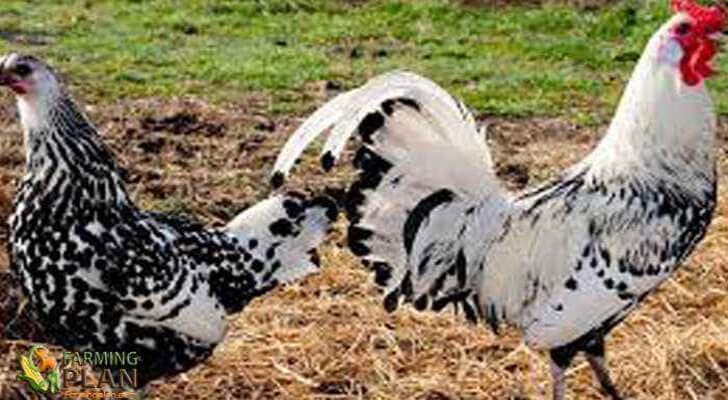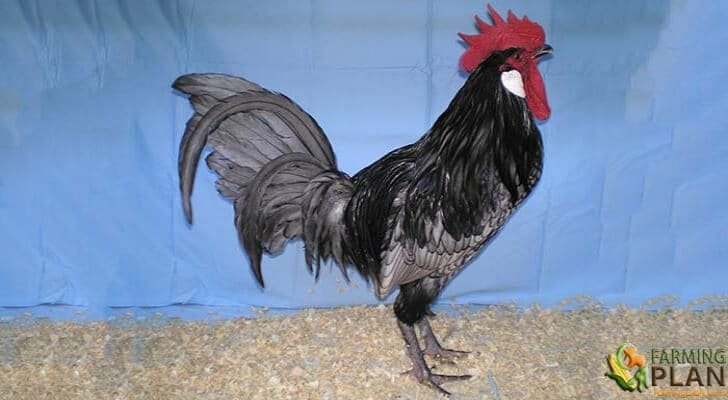The Saxony duck was developed by Albert Franz in Chemnitz in the 1930s, with the duck Rouen Pomerania, Pekin Aleman and the blue Pomerania, created in the east of Germany, and arrived in the United States in 1980. German Duck Breed is also called Saxon Duck, Sachsen-Ente, or Canard de Saxe. Saxony duck is a large duck breed and beauty developed in the Free State of Saxony. Saxony (Sachsen) is the oldest Free State in Germany.
The race is first shown to the public in the 1934 exhibition and was first exhibited in Chemnitz-Altendorf, the first Saxon County Exhibition. The Saxon duck or Saxon was recognized in East Germany in 1957, and in West Germany, the following year, in 1958, being accepted this new race in Great Britain in the year 1982.

The Saxon duck headed to the United States when the Holderread Waterfowl Farm imported them in 1984. They were admitted to the American Perfection American Standard of the American Poultry Association in the fall of 2000.
Characteristics of Saxony Duck
The Saxon duck is a very large duck with an imposing physique, elevated egg-laying of white-pink generally large size. The mature males have a nice bluish color and the females are soft peach with some slight bluish reflection.
Its beautiful figure, the torsos of its plumage and its rose and blue colors make this animal a beautiful ornamental duck. Ducks are of great ornamental value due to their beauty. Its weight varies between 3.3 and 4.2Kgen the male duck.
The Saxony duck weighs between 8-9 pounds at maturity. Its large head is somewhat oval and gently mixed with a medium-thick neck that is slightly arched forward. The compact body is long, broad across the shoulders, and has a prominent chest that is gently rounded.
The chest feathers are rich chestnut-burgundy, and the bottom and flanks are creamy. The female duck is orange or reddish-brown and the bill is yellow or orange, often with Shaded pale green. The Females have white cream Facial stripes, neck rings, and underbelly. The bill is orange, often with brown shading. The male and female ducks are orange to reddish-orange.
The Saxony duck is an active fodder and excellent layer with typical egg production of approximately 190-240 large white eggs annually. The Saxony duck does not grow as fast as some ducks. They have interesting plumage and produce meat with more flavor and less fat. They are better pickers and are more likely to hatch and hatch their eggs.
When choosing a Saxon duck for your flock, select vigorous, strong-legged birds that are free of physical deformities. Consider the growth rate, egg production and forage capacity for utility birds. For sample birds, choose birds that conform to the standard.
Food
The Saxon duck is growing in popularity due to its nutrient-packed diet. This duck is a great collector, so it feeds on many insects and plants that are found around bodies of water. Wild larvae, aquatic plants, molluscs, crustaceans, and other aquatic invertebrates all make up their nutritious diet. They also enjoy feasting on wild grains like millet, rice hulls and wheat. Even though Saxon ducks forage for much of their food, supplementing with grain keeps them in top shape and ready for the show ring. As one can see, the carefully crafted diet of the Saxon duck has made it a favorite among aficionados of waterfowl all around the world.
Usage
The Saxony Duck is a very popular choice for farmers and individuals looking to raise poultry. It boasts a high egg production rate while remaining low on feed; this makes this breed of duck ideal for those seeking to maximize their production while reducing their operational costs. As a bonus, the Saxony Duck produces delicious meat with good marbling, so it can be used in butchering operations as well. With these multiple uses, it’s no wonder why the Saxony Duck is such a widely sought-after breed!
Special Feature
The Saxon ducks are the most attractive of heavy ducks. The male has a striking pigeon blue hood and wingtips. The female is the white apricot color with white eye stripes. There have been several Saxon ducks gaining in waterfowl shows in recent years.
Keeping ducks is easy with this beautiful breed. It is believed that there are fewer than 500 Saxon ducks currently in the United States. They are on the Livestock Conservancy’s critical list, so choosing to raise some Saxon ducks on their own would help to keep this wonderful breed in existence. It is characterized by having a very calm temperament, able to coexist in harmony with other animals.
Duck Profile
| Duck Name | Saxony duck |
| Other Name | Sachsen-Ente o Canard de Saxe |
| Duck Purpose | Meat and eggs |
| Special Notes | Calm and Docile, |
| Classification | Heavy |
| Feather color | Blue, Yellow and Orange |
| Weight | 3.3 to 4.2 kg |
| Egg Color | White/Pink |
| Egg Size | Extra Large |
| Egg Weight | Up to 80 grams |
| Egg Productivity | 100 eggs in the year. |
| Country of Origin | Germany |
FAQ
Are Saxony ducks good pets?
Saxony ducks can make great pets, as they are friendly and relatively easy to care for. They are also quite hardy, making them well-suited to most climates. However, it is important to keep in mind that they do require a bit of space and regular access to water.
Are Saxony Ducks good layers?
Yes, Saxony ducks are good layers. They are especially known for their large eggs, which can weigh up to 2.5 ounces each. The Saxony duck is a hybrid breed, developed in Germany in the 1930s. It is a cross between the Pekin and the Rouen duck breeds and was bred specifically for its egg-laying capabilities. On average, an adult female Saxony duck will lay about 200 eggs per year – more than many other breeds of duck.
Are Saxony ducks rare?
Saxony ducks are not considered rare, though they do remain a relatively uncommon breed. The American Livestock Breeds Conservancy lists Saxony Ducks as “watch” status, meaning that the population is still small enough to warrant monitoring for conservation purposes.
How many eggs does a Saxony duck lay?
Saxony ducks are a medium-sized breed of duck, and they typically lay between 150-200 eggs per year. The number of eggs laid can vary depending on the age and health of the individual duck. For example, younger ducks may lay fewer eggs than older ducks, while healthier ducks may lay more eggs than ducks that have been subjected to stress or poor nutrition. Additionally, the amount of daylight and temperatures during the laying season can also affect how many eggs a Saxony duck will lay.
Conclusion
The Saxony duck is a German breed of domestic duck. It was bred in Saxony, Germany in the 1930s but because of World War II, it wasn’t recognised until 1957. We hope this guide has helped you! Good luck finding your perfect pet!
As A Reference: Wikipedia


